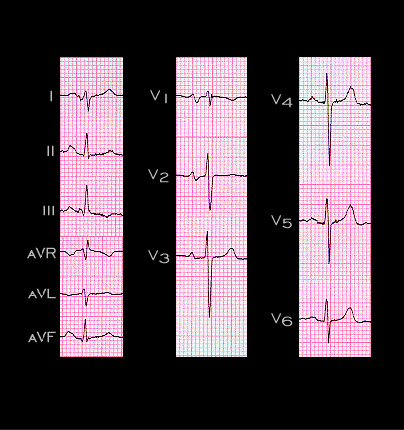
Now focus your attention on the V leads. Note the small S wave in V1, the somewhat small R wave followed by an S wave in leads V5 and V6, and an R to S ratio of close to 1 in leads V1 and V6. These features reflect the cancellation of the normally unopposed left ventricular forces by the hypertrophied right ventricle, The changes are less pronounced than those seen in the prior two examples in which the right ventricular pressure was elevated to a greater degree, and there was a greater degree of right ventricular hypertrophy. The ECG changes shown here are typical and virtually diagnostic for this group of patients, i.e. those with moderately severe pulmonary hypertension.
